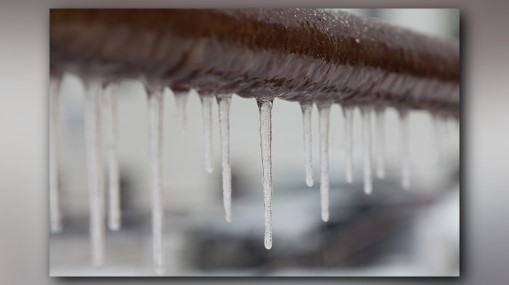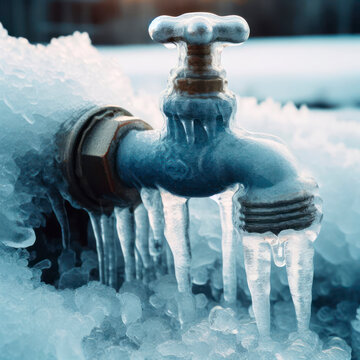We have noticed this great article pertaining to 6 Ways to Prevent Frozen Pipes directly below on the net and felt it made sense to write about it with you on this page.

Winter can damage your pipes, particularly by freezing pipes. Right here's just how to prevent it from occurring and what to do if it does.
Intro
As temperature levels decline, the risk of frozen pipes increases, potentially resulting in expensive repair services and water damages. Recognizing just how to stop icy pipelines is vital for home owners in cool environments.
Comprehending Frozen Pipelines
What creates pipelines to freeze?
Pipelines ice up when revealed to temperature levels below 32 ° F (0 ° C) for prolonged durations. As water inside the pipes freezes, it increases, taxing the pipe walls and potentially causing them to burst.
Risks and damages
Frozen pipes can result in water supply disruptions, home damage, and expensive repairs. Ruptured pipes can flooding homes and trigger comprehensive architectural damage.
Indications of Frozen Piping
Identifying frozen pipes early can avoid them from breaking.
Just how to identify frozen pipes
Look for decreased water circulation from taps, unusual odors or sounds from pipes, and visible frost on revealed pipelines.
Prevention Tips
Shielding prone pipes
Cover pipes in insulation sleeves or use warm tape to safeguard them from freezing temperature levels. Focus on pipelines in unheated or outside locations of the home.
Heating strategies
Keep indoor spaces adequately heated up, specifically areas with plumbing. Open up cabinet doors to permit cozy air to distribute around pipes under sinks.
Protecting Outdoor Plumbing
Yard hose pipes and outdoor taps
Disconnect and drain yard hose pipes prior to wintertime. Install frost-proof faucets or cover outdoor faucets with insulated caps.
What to Do If Your Pipes Freeze
Immediate actions to take
If you think frozen pipes, maintain taps open up to alleviate pressure as the ice thaws. Make use of a hairdryer or towels taken in hot water to thaw pipes gradually.
Long-Term Solutions
Architectural modifications
Consider rerouting pipelines far from exterior wall surfaces or unheated areas. Add added insulation to attics, cellars, and crawl spaces.
Upgrading insulation
Invest in high-grade insulation for pipes, attic rooms, and walls. Correct insulation assists keep consistent temperature levels and decreases the threat of frozen pipes.
Verdict
Avoiding icy pipelines requires positive actions and quick actions. By recognizing the reasons, signs, and preventive measures, house owners can shield their plumbing during cold weather.
5 Ways to Prevent Frozen Pipes
Drain Outdoor Faucets and Disconnect Hoses
First, close the shut-off valve that controls the flow of water in the pipe to your outdoor faucet. Then, head outside to disconnect and drain your hose and open the outdoor faucet to allow the water to completely drain out of the line. Turn off the faucet when done. Finally, head back to the shut-off valve and drain the remaining water inside the pipe into a bucket or container. Additionally, if you have a home irrigation system, you should consider hiring an expert to clear the system of water each year.
Insulate Pipes
One of the best and most cost-effective methods for preventing frozen water pipes is to wrap your pipes with insulation. This is especially important for areas in your home that aren’t exposed to heat, such as an attic. We suggest using foam sleeves, which can typically be found at your local hardware store.
Keep Heat Running at 65
Your pipes are located inside your walls, and the temperature there is much colder than the rest of the house. To prevent your pipes from freezing, The Insurance Information Institute suggests that you keep your home heated to at least 65 degrees, even when traveling. You may want to invest in smart devices that can keep an eye on the temperature in your home while you’re away.
Leave Water Dripping
Moving water — even a small trickle — can prevent ice from forming inside your pipes. When freezing temps are imminent, start a drip of water from all faucets that serve exposed pipes. Leaving a few faucets running will also help relieve pressure inside the pipes and help prevent a rupture if the water inside freezes.
Open Cupboard Doors
Warm your kitchen and bathroom pipes by opening cupboards and vanities. You should also leave your interior doors ajar to help warm air circulate evenly throughout your home.

I have been very excited about Helpful Tips to Prevent Frozen Pipes this Winter and I am hoping you appreciated the post. Loved our write-up? Please share it. Help other people find it. I treasure reading our article about Winter Plumbing Precautions: Preventing Frozen Pipes.
Get A Free Estimate